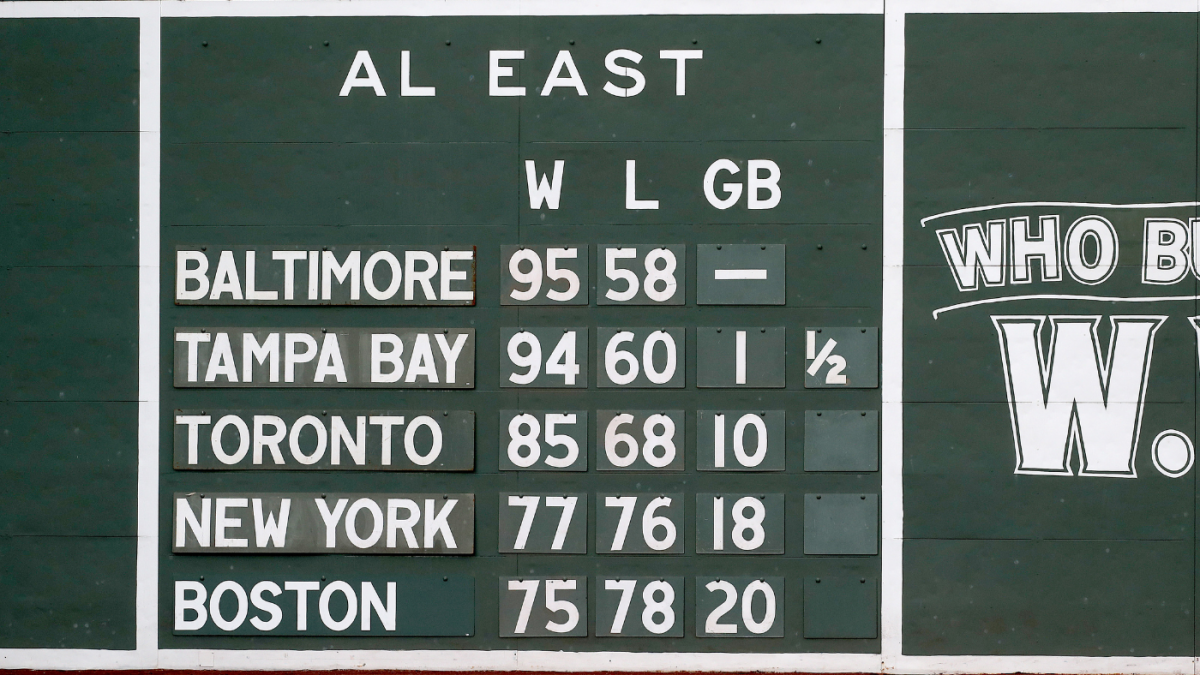
A new era of offensive analysis is officially upon us with last week’s long-awaited release of Statcast’s swing path and attack angle metrics. Last year’s release of bat tracking metrics such as bat speed and squared-up rate provided the public with a better understanding of the underlying factors that contribute to a player’s offensive production. With the addition of new metrics such as intercept point, swing path tilt, and attack angle, there is a large sense of optimism that the public will have better predictive tools to evaluate offensive production than the existing exit velocity and launch angle-based Statcast metrics.
The main benefit of the new bat tracking metrics is their ability to become reliable quickly, allowing for the public to conduct more detailed analysis of offensive players early in the season, compared to batted ball metrics which typically take multiple weeks of sample to become reliable. For example, bat speed becomes reliable after approximately 3 swings, similar to the sample size required for velocity to become reliable for pitchers. While metrics such as bat speed and collision efficiency (squared-up rate) have already proven to be valuable tools for understanding the factors that contribute to the exit velocity of a batted ball, new metrics such as swing path tilt and attack angle appear to be promising tools which can be used to both further understand the swings of Major League Baseball hitters and to better explain the year-to-year adjustments hitters make to improve their levels of offensive production.
One player whose year-to-year offensive improvement can be better explained by the new Statcast swing path metrics is Spencer Torkelson of the Detroit Tigers. Drafted 1st overall by the Tigers in the 2020 draft, Torkelson has had a relatively inconsistent career at the plate heading into 2025, with his best offensive season occurring in 2023 with a 108 wRC+. Regarded as a potential trade candidate over the past offseason, Torkelson has had an outstanding start to the 2025 season, producing a career-high 142 wRC+ with 13 home runs over his first 231 plate appearances of the season, cementing his role in the Tigers’ lineup for the near future. This article will take a look at the adjustments Torkelson made over the offseason, utilizing the new Statcast swing path metrics to explain Torkelson’s improved power production so far in 2025.
Overview
Alongside Riley Greene, Torkelson was widely considered to be one of the “foundational” pieces of the Detroit Tigers roster upon being called up to the Majors at the beginning of the 2022 season. Widely regarded as a highly polished offensive prospect upon being drafted by the Tigers in 2020, Torkelson struggled to clear the high offensive bar for a first baseman over his first three Major League seasons, with his highest level of offensive production being the 108 wRC+ he produced in 2023.
While there was optimism that Torkelson could build upon his 2023 offensive production to fuel a breakout in 2024, Torkelson struggled last season, producing a below-average 92 wRC+ over 381 plate appearances, and was demoted to Triple-A Toledo last summer. To begin the 2025 season, Torkelson has demonstrated significant improvements at the plate, increasing his walk rate from 8.7% to 13.0% and his ISO from .155 to .275, which has contributed to a career-high 142 wRC+ over the first 231 plate appearances of the season.
The table above contains Torkelson’s Process+ metrics over each of the past three seasons. Torkelson has consistently demonstrated an above-average ability to make good swing decisions, with his chase rate never surpassing 24.1% in each of the past three seasons. Torkelson’s improved walk rate to begin the 2025 season can be attributed to the improvement in his Decision grade from 113 and 134, which corroborates with a decline in chase rate from 23.0% in 2024 to 21.2% this season.
Torkelson has consistently displayed a below-average ability to make contact, however, as a player who makes above-average swing decisions, a high Power grade can compensate for a lower Contact grade, as the amount of walks he can generate provides him with a solid floor of offensive production. Given this reliance on his ability to hit for power to generate offensive production, Torkelson’s decline in his Power grade from 108 in 2023 to 90 in 2024 was a major factor in his reduced offensive output last season. To reclaim his offensive potential, Torkelson needed to improve his power output in 2025, and so far he has delivered, producing a Power grade of 118 this season. To accomplish this, Torkelson made a few notable adjustments to his swing path, allowing him to hit the ball in the air more frequently, which has led to an improved level of offensive production.
Adjustments
To reclaim his lofty offensive potential, Torkelson needed to adjust his swing path to lift the ball in the air more frequently and improve his power output. Throughout his professional career, Torkelson has demonstrated an ability to hit the ball hard, however, he developed an inability to hit batted balls at optimal launch angles in 2024, resulting in a decline in power output and overall offensive production.
During his promising 2023 season, Torkelson produced a 14.1% barrel rate, 102.7 EV50, and hit the ball in the air (fly balls and line drives) 66.1% of the time. Hitting the ball hard at optimal launch angles, as measured by barrel rate, is a good recipe for generating power output, and this batted ball profile was a driving force behind Torkelson’s .213 ISO he produced in 2023. Last season, these metrics regressed to a 6.7% barrel rate, 99.7 EV50, and 65.5% air rate, contributing to a decline in power output to a .155 ISO. This decline in power output was particularly apparent against fastballs, with Torkelson’s xwOBA against four-seam fastballs declining from .406 in 2023 to .326 in 2024, and his xwOBA against sinkers declining from .396 to .326. While a 65.5% air rate was still well above the Major League average (55.6%), Torkelson’s declining ability to hit the ball hard and ability to hit the ball hard at optimal launch angles were points of emphasis that needed to be addressed over the offseason if Torkelson wanted to reclaim his prior levels of power output. So far this season, Torkelson has improved his barrel rate to a career-high 14.4%, increased his air rate to 69.8%, improved his xwOBA against fastballs, and while he hasn’t fully regained the EV50 he displayed in 2025, he has improved his pull air rate to 31.7%.
How has Torkelson achieved this improvement in batted ball quality? Statcast’s bat tracking and swing path metrics can provide us with some insight into the adjustments that Torkelson made over the offseason to increase his offensive production so far this season. First, a quick primer on the new swing path metrics. Since the beginning of the season, Statcast has unveiled four new swing path metrics that are referred to in the table above: swing path tilt, attack angle, ideal attack angle%, and intercept point. Swing path tilt measures the angle of the player’s bat path over the 40 milliseconds prior to contact, with a higher angle reflecting a “steeper” swing and a lower angle reflecting a “flatter” swing. The swing path tilt of a given swing can be influenced by the pitch’s location, as pitches up in the zone are likely to generate flatter swings while pitches lower in the zone are likely to generate steeper swings. Attack angle measures the vertical direction of a player’s bat at the moment of contact (or estimated point of contact), and is heavily influenced by intercept point (the estimated point of contact relative to a hitter’s center of mass), as the bat travels more upward throughout a player’s swing. Ideal attack angle% is the percentage of a player’s swings that are swung with an attack angle between 5 and 20 degrees, which Statcast defines as the optimal range for offensive production.
As shown by the table above, Torkelson made a significant adjustment to the angle of his bat path over the offseason, with his average swing path tilt increasing from 33 degrees in 2024 to 40 degrees in 2025. In addition, Torkelson has also improved his contact/intercept point, making contact (on average) 1.1 inches closer to the pitcher, relative to his center of mass, allowing for him to make contact more frequently during the upward-moving portion of his swing, and likely contributing to his increased pull air rate. These improvements in intercept point and swing path tilt have led to Torkelson’s average attack angle increasing from 11 degrees in 2024 to 14 degrees this season, and this improved ability to make contact with the ball when the bat is at a steeper angle is likely a contributing factor behind Torkelson’s air rate. Torkelson’s bat speed has continued to decline this season (down to 73.0 MPH, compared to 73.6 MPH in 2024), however, an improved ability to “square up” the baseball has led to Torkelson producing improved exit velocities so far this season (since exit velocity is largely generated from a combination of bat speed and collision efficiency).
There is still a lot to digest regarding how to utilize the new swing path metrics for evaluating offensive production, however, it is evident that Torkelson’s increased swing path tilt and altered intercept point have led to an increased attack angle, causing Torkelson to hit the ball in the air more frequently, resulting in an improved batted ball profile and improved barrel rate. Perhaps the change in swing path tilt has resulted in Torkelson’s swing being more “on-plane” with the incoming pitch, resulting in an improved squared-up rate, however, this hypothesis is difficult to prove with the existing metrics.
It should be noted that Torkelson’s ideal attack angle rate has decreased from 53.8% in 2024 to 48.2% in 2025. I am skeptical that ideal attack angle rate is useful when utilized in isolation, and perhaps this metric could be more effective when used in tandem with bat speed or a bat tracking metric such as blast rate, which I am confident will be an area of future research. This uncertainty about the efficacy of ideal attack angle rate underscores the novelty of the new swing path metrics, as while they project to be a significant advancement in how the public analyzes offensive players, the proper method to utilize each metric still needs to be thoroughly researched. With that being said, Torkelson’s early-season breakout can be more clearly explained using these new swing path metrics, as it is apparent that his improved swing path tilt and attack angle have played significant roles in improving his batted ball profile, resulting in an improved level of offensive production.
Concluding Thoughts
Spencer Torkelson has made some impressive adjustments to his swing path over the offseason which has fueled his early-season breakout, and it appears that his improved level of offensive production will be largely sustainable over the remainder of the season. Taking a look at “traditional” regression indicators, Torkelson currently has a .262 BABIP, which is at a reasonable level considering batters who hit a high amount of fly balls tend to run lower BABIPs (as fly balls are often caught by outfielders), and Torkelson has run a .268 BABIP over the course of his Major League career. Torkelson is currently producing a .378 xwOBA, compared to a .369 wOBA, which are roughly equal to each other considering that xwOBA has not yet been updated to reflect the current run environment (this update typically occurs in June).
Torkelson is currently producing a 142 wRC+, and both OOPSY and THE BAT X have Torkelson projected for a 114 wRC+ over the remainder of the season. I’ll be taking the over on these projections, and I would not be surprised if Torkelson produced a ~120 wRC+ over the remainder of the season. Pitchers will inevitably adjust to Torkelson’s resurgence at the plate, however, the changes that Torkelson has made to his swing path appear to be legitimate and are significant drivers of his improved offensive production this season. Statcast’s new swing path and attack angle data holds a lot of promise in regards to improving the public’s understanding of the factors that drive offensive production, and the availability of this data provides confidence that the adjustments Torkelson has made are sustainable, and allows him to reclaim his potential as the Detroit Tigers‘ long-term first baseman.
Statistics as of end of play on May 27th, 2025.
Photos by Julian Avram/Icon Sportswire and SpaceX/Unsplash | Featured Image by Ethan Kaplan (@djfreddie10.bsky.social on Blue Sky and @EthanMKaplanImages on Instagram)


